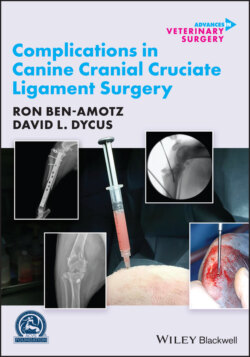Читать книгу Complications in Canine Cranial Cruciate Ligament Surgery - Ron Ben-Amotz - Страница 24
2.2 Host Factors 2.2.1 Breed, Sex, and Body Weight
ОглавлениеSeveral host factors identified as risk factors for SSI development are beyond the control of the veterinary team, such as breed, sex, and body weight. Bulldogs and German Shepherds have been identified as having an increased risk for development of SSI following TPLO surgery [21, 27]. Labrador Retrievers and mixed‐breed dogs have been identified as having a lower SSI development risk following TPLO surgery [4, 3]. Both Fitzpatrick and Solano and Nicholson et al. identified intact male dogs to be at higher risk of SSI; however, sex was not identified as a risk factor in other studies [3, 4, 17, 28]. Increased body weight has been significantly associated with an increased SSI risk in several studies [2, 4, 10, 15,28–30]. In one study, each 1 kg increase in body weight resulted in 1.03 times increased odds of developing an SSI, while a second study noted that for each 1 kg increase in body weight, the odds of developing an SSI increased by 4.7% [28, 29]. As these factors are inherent to the patient and cannot be specifically controlled, this information can be utilized to distinguish those animals at higher risk of developing an SSI and thus requiring greater preventive measures.
Table 2.1 Surgical procedure classification.
Source: Based on Turk et al. [1], Eugster et al. [2], Nicholson et al. [3], Fitzpatrick and Solano [4], Beal et al. [5], Frey et al. [6], and Vasseur et al. [7].
| Clean | No infection No break in aseptic technique Nontraumatic |
| Clean‐contaminated | Controlled access to a hollow viscus Minor break in aseptic technique |
| Contaminated | Entry through nonseptic, yet inflamed tissues Spillage from a hollow viscus – localized, controlled Major break in aseptic technique Fresh, traumatic wounds (<4 h) |
| Dirty | Perforated hollow viscus Septic purulent discharge encountered Chronic, traumatic wounds (>4 h) |
Table 2.2 Halstead's principles.
| Gentle tissue handling Meticulous hemostasis Strict aseptic technique Preservation of blood supply Elimination of dead space Accurate apposition of tissues while minimizing tension |
